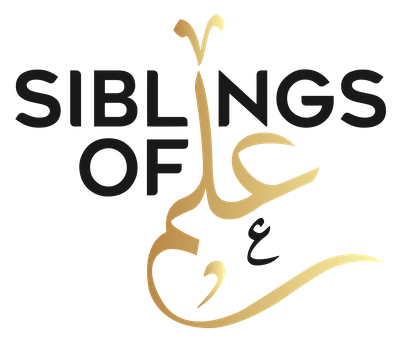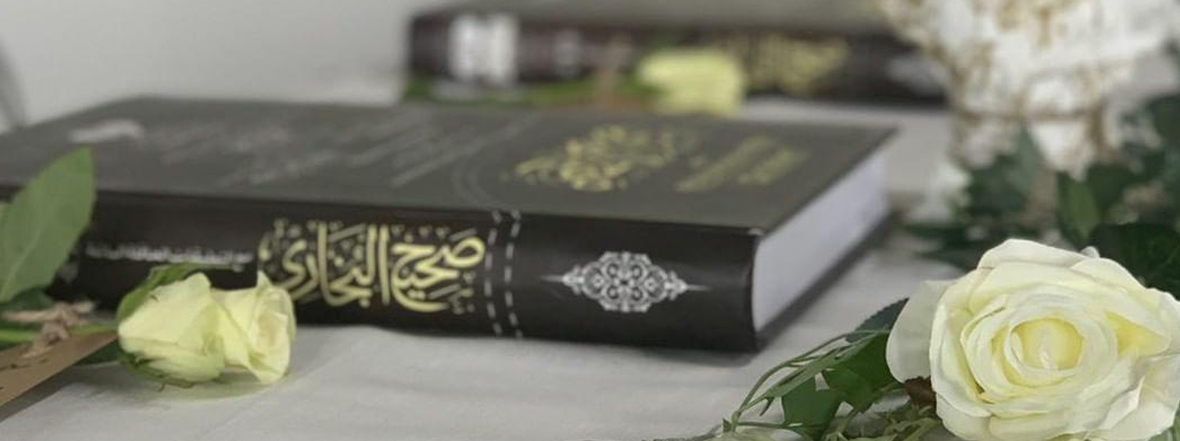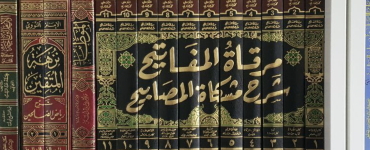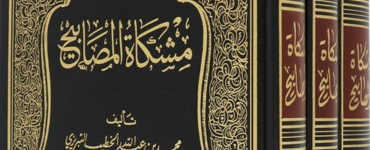Second only to the Arabs, the Bengali-speaking Muslims make one of the largest linguistic groups in the Muslim world.([1]) A significant number of the British Muslims are also of Bangladeshi origin.([2]) It is a shame, therefore, that the majority of those who grew up in Europe, America and Canada know very little of their family history, culture and heritage. This includes the profound legacy of ḥadīth.
Contrary to popular belief, Islām as a religion was well-established in present-day Bangladesh long before the advent of Shāh Jalāl of Sylhet (d. 815 AH). As a matter of fact, Arab and Persian tradesmen had entered Chittagong as early as the 7th century CE. According to M. M. Khan, ancient coins dating back to the Abbasid caliphate confirm the presence of early Muslim traders in Bangladesh.([3]) These coins were discovered in Rajshahi and also Comilla; the latter being the birthplace of arguably one of today’s leading authorities in ḥadīth, Shaykh Muḥammad ʿAbd al-Mālik.([4])
Shaykh Imdād al-Ḥaqq Hobigonji, who now resides in Walsall, England, seems to be of the opinion that the science of ḥadīth had been introduced to West Bengal by Shaykh Jalāl al-Dīn al-Tabrīzī, who died in 642 AH – long before the birth of Shāh Jalāl. As for entering Bangladesh itself, Shaykh Sharaf al-Dīn Abū Tawʾama (d. 700 AH), who himself taught ḥadīth, had founded a centre of learning in Sunargaon.([5])
Among the notable muḥaddiths of the 8th century AH was Shaykh Akhī Sirāj al-Bengali, who had memorised the renowned book Mashāriq al-Anwār by heart. Sent by his Shaykh, Niẓām al-Dīn al-Awliyāʾ, he settled in Bangladesh, where he taught the famous work.
Soon after, Bangladesh was honoured with the arrival of two great sages, albeit not known for the dissemination of ḥadīth: Shaykh ʿAbd al-Qadir al-Jīlānī’s grandson, Sayyid Aḥmad al-Tannūrī, and his contemporary, Shaykh Shāh Jalāl of Sylhet. It was through the latter’s efforts that a huge number of Hindus and Buddhists embraced Islām,([6]) which explains why many of the laity have assumed he was the first man to bring the religion to the region of Bengal.
A name at the tip of every Bengali Muslim’s tongue, Shaykh Shāh Jalāl is better known as a righteous man at whose hands Allāh S made manifest many miracles. Although some of the accounts might be exaggerated, others have been confirmed by eye-witnesses. The belief of the Ahl al-Sunna wa ’l-Jamāʿa is to believe in the sound reports, as Imām al-Ṭaḥāwī writes:
ونؤمن بما جاء من كراماتهم، وصح عن الثقات من رواياتهم.
“We believe in the miracles of the saints as conveyed and verified by trustworthy narrators.”([7])
Ibn Baṭṭūṭa of Morocco authored one of the world’s first travel books, Al-Riḥla. In it, he writes about a few miracles of Shaykh Shāh Jalāl that he had witnessed during his visit to Sylhet. An interesting one includes how the Shaykh predicted the Moroccan traveller’s arrival:
ولما قصدت زيارة هذا الشيخ لقيني أربعة من أصحابه على مسيرة يومين من موضع سكناه، فأخبروني أن الشيخ قال للفقراء الذين معه: قد جاءكم سائح المغرب فاستقبلوه، وأنهم أتوا لذلك بأمر الشيخ. ولم يكن عنده علم بشيء من أمري، وإنما كوشف به. وسرت معهم إلى الشيخ فوصلت زاويته خارج الغار ولا عمارة عندها، وأهل تلك البلاد من مسلم وكافر يقصدون زيارته، ويأتون بالهدايا والتّحف فيأكل منها الفقراء والواردون. وأما الشيخ فقد اقتصر على بقرة يفطر على حليبها بعد عشر كما قدمناه، ولمّا دخلت عليه قام إلي وعانقني وسألني عن بلادي وأسفاري، فأخبرته. فقال لي: «أنت مسافر العرب». فقال له من حضر من أصحابه: والعجم يا سيدنا. فقال: «والعجم، فأكرموه». فاحتملوني إلى الزاوية وأضافوني ثلاثة أيام.
“When I was on my way to visit this Shaykh, four of his companions met me two days’ journey from the place where he lived. They told me that the Shaykh had said to the faqirs who were with him, ‘The traveller from Morocco has come to you. Go and receive him.’ They had set out accordingly by his order. He had no knowledge whatever of me; this had been divinely inspired to him. I went with them to the Shaykh and came to his hospice outside the cave. When I entered his presence, he rose, embraced me and asked about my country and my travels, about which I informed him. He said to me, ‘You are the traveller of the Arabs.’ One of his companions who was present said, ‘And of the non-Arabs, my master.’ He said, ‘And of the non-Arabs. Treat him with respect.’ They took me to the hospice and gave me hospitality for three days.”([8])
Although a great sage at whose hands a large number of people embraced Islām, Shaykh Shāh Jalāl is not known to have taught ḥadīth, or any other subject for that matter. After his time, Bangladesh saw numerous other influential figures who made significant contributions to both academia and the spiritual well-being of the masses. Al-Ḥājj (or Ḥājī) Sharīʿat Allāh (d. 1243 AH) and Mawlānā Karāmat ʿAlī al-Jawnpuri (d. 1260 AH) had dedicated their lives to eradicating the shirk that had entered into the people’s lives and reviving tawḥīd therein. Mawlānā Idrīs al-Sylheti and his son Shaykh ʿAbd al-Qādir, on the other hand, left behind commentaries on books of ḥadīth and ʿaqīda, like Jamʿ al-Jawāmiʿ, Sharḥ al-ʿAqāʾid al-Nasafiyya and Al-Fiqh al-Akbar.
From 1908 CE, the ‘Azhar of Bengal’ Dār al-ʿUlūm Muʿīn al-Islām of Hathazari became the first institute of learning to teach the six popular books of ḥadīth as part of its syllabus. This was then followed in 1909 by Al-Madrasa al-ʿĀliya of Calcutta, which was founded by the British government.([9])
Shaykh Imdād al-Ḥaqq Hobigonji, in his Hidāyat al-Sārī, dedicates fifteen pages to this very topic and includes sixty one entries of the influential scholars and sages of Bangladesh. Due to his immense humility, he did not add an entry for himself. A student of his, however, filled this gap in a brief six-page biography of the Shaykh.([10]) Among the noteworthy anecdotes of his life is the fact that not just one but all of his teachers unanimously and undisputedly appointed him to lecture on Ṣaḥīḥ al-Bukhārī immediately upon graduation – an honour typically not granted to anyone until his beard becomes white. Another interesting one is that Allāh S had blessed him with the Saudi government’s permission to teach ḥadīth in the Ḥaram of Makka.
Despite his energetic youth, the Shaykh’s high ambition in his adulthood can be gauged from the following. On 12th Shawwāl 1437 AH (17th July 2016), I met the Shaykh and asked him how old he was when he began writing the Arabic commentary to Ṣaḥīḥ al-Bukhārī. Now 76, he replied, ‘I was only 45.’([11])
Let this be an inspiration for today’s youth, who have the potential to be the leaders of tomorrow.
([1]) Khan, Muhammad Mojlum, The Muslim Heritage of Bengal: The Lives, Thoughts and Achievements of Great Muslim Scholars, Writers and Reformers of Bangladesh and West Bengal, Kube Publishing (2013), England, p. 2.
([2]) Mohammed, Amjad M., Muslims in Non-Muslim Lands: A Legal Study with Applications, The Islamic Texts Society (2013), Cambridge, p. ix.
([3]) Khan, The Muslim Heritage of Bengal, pp. 1-2, 13, 21, 29.
([4]) Author of Al-Madkhal ilā ʿUlūm al-Ḥadīth al-Sharīf. For a short biography of the Shaykh, see the following by my good friend, Shaykh Muntasir Zaman of America: https://ahadithnotes.com/2014/07/23/book-review-an-introduction-to-the-disciplines-of-the-noble-hadith-by-mufti-abdel-malik-al-kumillai/.
([5]) Al-Sylheti, Imdād al-Ḥaqq, Hidāyat al-Sārī ilā Dirāsat al-Bukhārī: Muqaddima Sharḥ Saḥīḥ al-Bukhārī, Zam Zam Publishers (1429/2008), Karachi, vol. 2, pp. 176-177.
([6]) Ibn Baṭṭūṭa, Tuḥfat al-Nuẓẓār fī Gharāʾib al-Amṣār wa ʿAjāʾib al-Asfār, Dār Iḥyāʾ al-ʿUlūm (1407/1987), Beirut, vol. 2, p. 625; Mackintosh-Smith, Tim, The Travels of Ibn Battutah, Picador (2002), London, p. 254.
([7]) Al-Ṭaḥāwī, Abū Jaʿfar, Al-ʿAqīda al-Ṭaḥāwiyya, Dār al-Salām (1429/2008), Cairo, p. 30; translation taken from Yusuf, Hamza, The Creed of Imam al-Ṭaḥāwī, Zaytuna Institute (2007), USA, p. 78.
([8]) Ibn Baṭṭūṭa, Tuḥfat al-Nuẓẓār, vol. 2, p. 625. Translation edited from Tim Mackintosh-Smith’s summarised edition, The Travels of Ibn Battutah, p. 254.
([9]) Al-Sylheti, Hidāyat al-Sārī, vol. 2, p. 176.
([10]) Ibid., vol. 1, pp. 20-25.
([11]) Bangla: Fach-challish aslam matro.
Written by Shaykh Shahin-ur Rahman (Al-Rahma)
